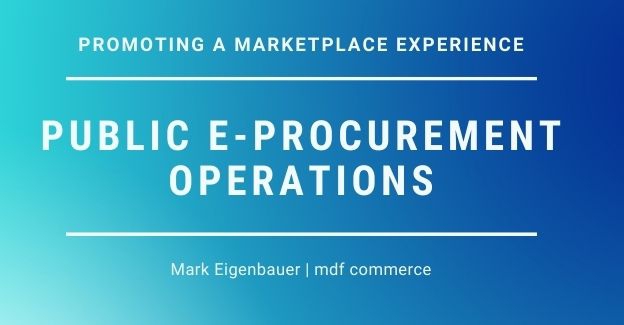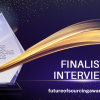Public e-procurement operations are gaining steam in 2022 as governments increase focus on supplier diversity and inclusion, says Mark Eigenbauer, President of e-procurement at mdf commerce. He discusses the increased government focus on digital procurement, the efficiency it is able to drive and what it means to have a consumer-like shopping experience in B2B government procurement space.
The government procurement industry represents a spend of nearly $13 trillion globally every year. This spend involves buying goods and services to run day-to-day operations, including basic items such as computers, office equipment, medical items, legal services, gas and electricity for everyday needs to more complex construction and infrastructure projects.
For many smaller government agencies, the process to procure all these goods and services is still largely manual, generating high levels of complexity and inefficiency. This not only wastes taxpayer money but also frustrates all parties involved.
Since the pandemic, the number of organizations embracing electronic sourcing solutions has skyrocketed as remote work demanded digitization of procurement. But it’s not just basic e-bidding solutions for smaller organizations that are taking off. Larger government organizations that had electronic sourcing solutions in place are looking for more sophisticated e-procurement technology to help overcome an increasing number of challenges and initiatives facing public procurement: supply chain disruptions, diversity and inclusion goals, and a shifting workforce.
A New Age of Digital Procurement Solutions
With government agencies exploring ways to improve and digitalize procurement processes, the solutions that use a powerful and centralized integrated system to handle a wide range of procurement activities are best suited to provide the most benefits to increase the efficiency of public sector procurement and bring more value for taxpayer dollars.
These type of procurement solutions are specifically built for the public sector, are secure, easily audited and can seamlessly integrate with any other existing technology, enabling government agencies to track and ensure strict compliance with procurement laws and procedures. They can, for example, dictate actionable items and flag vendors who require further vetting. Such tools offer built-in administrative controls that help reduce the risk of non-compliance with government regulations.
Digitization further opens doors to a wider supplier ecosystem – deemed even more important since the pandemic. It also helps meet diversity and inclusion goals as it gathers data about supplier type, solicitation chances and response rates, allowing local, small, minority, women and veteran-owned businesses and equal playing field.
Promoting a Marketplace Experience
Although the best public procurement technology is specifically designed for the public sector, that doesn’t mean it shouldn’t have a consumer-like functionality and appeal. One of the most sought-out e-procurement technologies today is an online shopping tool, or marketplace, specific to the public sector.
This type of marketplace provides a new way for government buyers to search and purchase goods and services, as well as a new way for independent suppliers to reach government buyers. In a matter of minutes, a government buyer can shop across strategically sourced contracts as well as open-market catalogs, add them to their cart and check out if their organization allows it.
The best thing about this type of marketplace is that it is set up according to the government organizations’ rules and initiatives. For example, if the City of A wants to promote local businesses, when a buyer for the City of A logs in and searches for pens the local suppliers selling pens will come up first. Or if City of B only wants its buyers to purchase from already strategically sourced catalogs, when a buyer for City of B logs in, none of the open market catalogs will appear.
Today’s e-procurement technology for the public sector buyers allows for the greatest operational efficiency, promotes an open, fair and transparent process, and tracks all spend and supplier types. Another added advantage is that this technology ensures operational continuity for procurement teams. No matter the circumstances or challenges, professionals can use these digital tools via any internet-connected device to shop for necessary items. This goes for people working in an office, from home or in an Emergency Operations Center (EOC).
These digital offerings will allow governments to fully leverage data and analytics offered by the e-procurement tools and platforms, making it easy for them to consolidate functioning of the various departments as they work cohesively, all while promoting traditionally underserved supplier categories and bringing more value for every taxpayer dollar spent.








